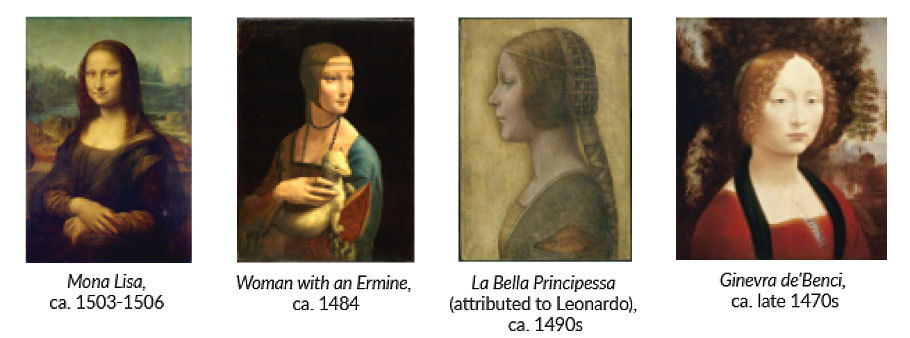Da Vinci's Way: Fashion, Renaissance Style
Follow Instagram fashion trends today, and you'll see influencers showing the latest trends. But how would a fashionista in the fifteenth century know what not to wear?
The fashions here are kind of atrocious: women parading in fine linens and silks in a rainbow of colors. For the peasants, the look is what I can only describe as vintage burlap sack. Wealthy citizens show off in the extreme—lace, gold, wigs and furs. And that's just for the men!
In this passage in Da Vinci's Way, Charley muses on what might be trending in fashion in fifteenth-century Florentine society. After all, she arrives unsuitably dressed in twenty-first century clothes!
During the Renaissance, Italian noblewomen wore voluminous gowns with sweeping floor-length sleeves and hats and headresses that were draped, bejewelled, and feathered. The wives and daughters of a rising urban middle class would be status conscious and don clothes to imitate the higher classes. Poor and rural women were likely to wear unrefined linen and wool dresses, as Florence was a center of the wool trade.
As wealth and trade increased throughout Europe, styles changed quickly as women would try to keep up with the de'Medicis. But just as suddenly, the rulers of Florence, or the Church, would change their minds about acceptable public attire for women. Such decrees could lead to scandal, or even become a life-and-death matter!
Artists, commissioned by wealthy families, sought to capture the feminine ideal of Beauty. During the Renaissance, this would have meant pale skin, a full, voluptuous figure, a high forehead and delicate facial features. Makeup for women in the day would reflect that although, unfortunately, they may have also included some dangerous poisons in their fabrication, including lead, mercury and sulfur.
Just like today, many women, especially in the nobility, were slaves to capturing the look in vogue. Artists, not photographers, would capture the perfect selfie. And judging from his exquisite care in capturing their images, Leonardo da Vinci seems to have loved women. Fashion portraiture being the best record of the times, we'll let some of Leonardo's most famous models share the runway!

Want to Learn More?
- Artist, Leza The Makeup. "Ideals of Beauty – The Renaissance." Lezamakeup, 22 Jan, 2013. https://lezamakeup.wordpress.com/2013/01/22/ideals-of-beauty-the-renaissance/. Accessed on 6 Sep, 2018.
- Eagles, Lane. "Beauty Adorns Virtue: Italian Renaissance Fashion" Fashion History Timeline, 30 Nov, -0001. https://fashionhistory.fitnyc.edu/beauty-adorns-virtue-italian-renaissance-fashion/. Accessed on 5 Sep, 2018.
- Gleysteen, Mackenzie. "The Power of Pretty: Feminine Beauty Ideals Hold Importance in Personal, Professional Pursuits" Collegiate Times, 7 Mar, 2018. http://www.collegiatetimes.com/opinion/the-power-of-pretty-feminine-beauty-ideals-hold-importance-in/article_736816d4-222d-11e8-88a8-6f4bfd68487e.html. Accessed on 3 Aug, 2018.
- Hanson, Paige L. "The Renaissance Outfit" Renaissance Clothing and Sumptaury Laws, 30 Nov, -0001. http://www-personal.umd.umich.edu/~cfinlay/sumptuary.html. Accessed on 16 Aug, 2018.
- Jamilah, TAG Member. "The Ideal Woman" The MET, 17 Feb, 2012. https://www.metmuseum.org/blogs/teen-blog/renaissance-portrait/blog/the-ideal-woman. Accessed on 10 Oct, 2018.